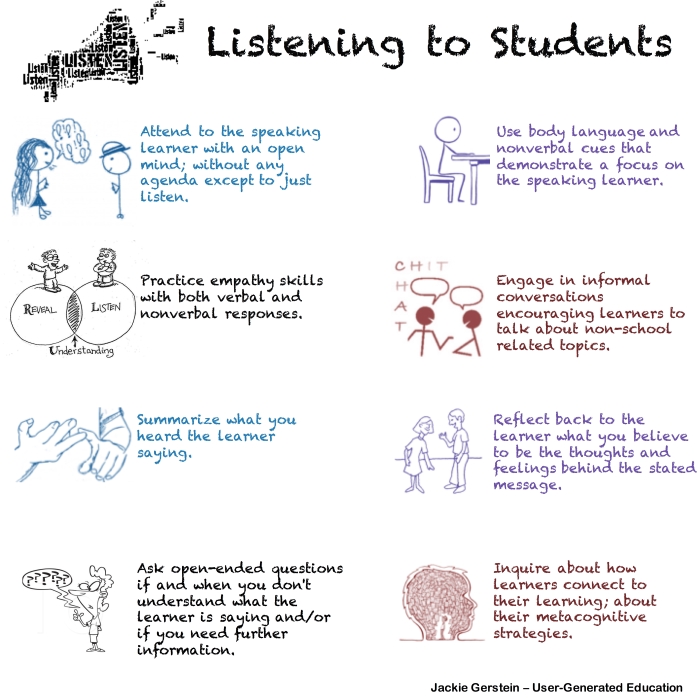Student Voice Comes With Teachers as Listeners
This piece was actually sparked by an interview of Lady Gaga by Soledad O’ Brien at the Born This Way Emotion Revolution Summit where Gaga stated, “It’s time to stop telling learners what to do and start listening for we can do for them.”
One of those accepted practices, sadly, in most educational settings is that the teacher is the authority to be respected and listened to without question. Listening to students is not a practice that is often taught in teacher education programs.
There is a current movement, in some circles, to promote and honor student voice. But, and this is a huge but, if educators are serious about honoring student voice, they need to first learn how to listen, really listen to their students.
Students who are given a voice in setting goals gain ownership in what they’re learning. Teachers who listen to what students tell them they need to learn gain more than just a better understanding of the children they teach — they gain clarity on their roadmap to better teaching. And when conversations about teaching and learning are allowed to happen, teachers and students develop mutual trust and high expectations. (Want to Improve Teaching? Listen to Students)
Sadly, upon doing a Google search about why’s and how’s on educators listening to students, I found very little on the topic. It really gives the message – reinforces that teachers listening to students is not seen as part of best classroom practices. So my goal of this post is to offer some suggestions on how to listen to learners.
Listening Skills for Educators
- Attend to the speaking learner with an open mind; without any agenda except to just listen.
- Use body language and nonverbal cues that demonstrate a focus on the speaking learner.
- Practice empathy skills with both verbal and nonverbal responses.
- Engage in informal conversations encouraging learners to talk about non-school related topics.
- Summarize what you heard the learner saying.
- Reflect back to the learner what you believe to be the thoughts and feelings behind the stated message.
- Ask open-ended questions if and when you don’t understand what the learner is saying and/or if you need further information.
- Inquire about how learners connect to their learning; about their metacognitive strategies.

Benefits of Listening to Learners
The benefits of encouraging and listening to student voices, and then acting upon what they say include:
- Positive classroom culture which can lead to a positive school culture,
- Improved teaching and learning,
- Better teacher-student relationships,
- Learners see themselves as active partners in their own education; they become more invested in their learning,
- Learners feeling that they are in a safe environment where they are willing and able to express concerns, ask questions, ask for help, take risks.

My mnemonic is “Please Be Child Friendly” and stands for:
P – Power This is all about learner voice.
B – Belonging Know your students
C – Choice Provide choices and link these to responsibilities
F- Fun Celebrate by linking achievement or success to fun.
This is a take on William Glasser’s work on choice theory applied to a learning context supported by nearly 4 decades of teaching experiences.
As teachers we need to not only plan lessons based on curriculum content but on PBCF. If we do not actively plan this way we risk excluding the learner, possibly permanently.
For more of PBCF see: http://wp.me/p2LphS-4
4c3d
November 23, 2015 at 8:29 am
Hi Jackie,
I just hear some members of the faculty who would respond, “why should we listen to students? The faculty are the experts, and the students come to school to learn from experts.”
How would your reply to them?
ian
January 11, 2016 at 2:44 am